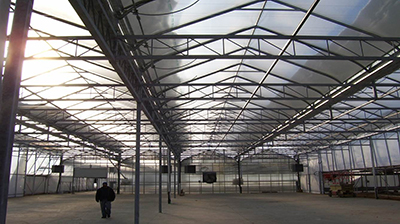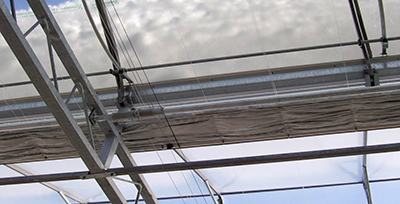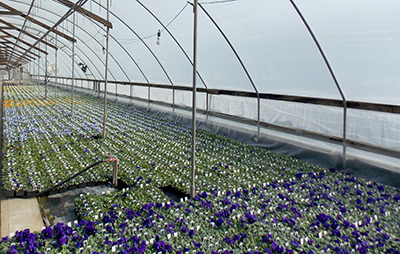Increasing energy efficiency in the greenhouse
High efficiency heaters and energy curtains could reduce energy usage and increase the environmentally friendliness of your business.

While some greenhouse growers are enjoying some sun-filled summer days, those thoughts of the brutal winter and high energy bills seem long gone. Past the rushes of spring and before those of fall, have you considered the energy usage of your business? Have you contemplated implementing money-saving technology that also benefits the environment and reduces your carbon footprint? Michigan State University Extension would like to invite growers to consider excellent energy-saving products. Below are the most common energy-efficient technologies.
High-efficiency heaters
Installing high-efficiency heaters can save growers up to 45 percent on energy costs, depending on the age and efficiency of the heaters being replaced. As technology has advanced, 93- or 95-percent efficient heaters are now available. Growers should be sure to maintain heaters in the greenhouse to make sure they are working efficiently and also not emitting any organic compounds, such as ethylene, which can induce flower drop or bleaching of the upper foliage of plants.
IR-polyethylene film
Polyethylene film treated to block infrared radiation (IR) can increase energy savings. This plastic film, often used to cover the greenhouse, can block infrared radiation and reduce ventilation in the summer and help reduce heat loss at night in the winter. Installing polyethylene IR film often has an extremely short payback period of only a few months.

IR-polyethylene film reduces heat loss in the winter in temperature climates. Photo credit: Tom Dudek, MSU Extension
Energy curtains
Installing energy curtains can save you up to 30 percent in energy costs. They are often used during the winter in temperate climates to retain the heat closer to the crop and reduce heat radiation. The curtains can also be used in the summer months to provide shading to crops on excessively hot days in the greenhouse.

Energy curtains can save you up to 30 percent in energy costs. Photo credit: Tom Dudek, MSU Extension
Compact fluorescent bulbs to replace incandescent lamps
Compact fluorescent lamps (CFL) use approximately a quarter of the energy of incandescent lamps. Growers should replace the incandescent lamps in work areas or others areas of the greenhouse where they are not being used for photoperiodic lighting. In areas where they are being used for photoperiodic lighting, MSU Extension recommends installing CFL’s for every other incandescent lamp since flowering of some photoperiodic crops can be delayed under only CFL’s. Growers could also consider installing one of the light-emitting diode (LED) flowering lamps that have become commercially available within the last two years.

Compact fluorescent lamps used for photoperiodic lighting in a greenhouse. Photo credit: Heidi Wollaeger, MSU Extension
For more information on energy efficient practices and technology, check out “Energy Conservation Strategies” or the many resources at MSU’s Floriculture Energy website.



 Print
Print Email
Email


